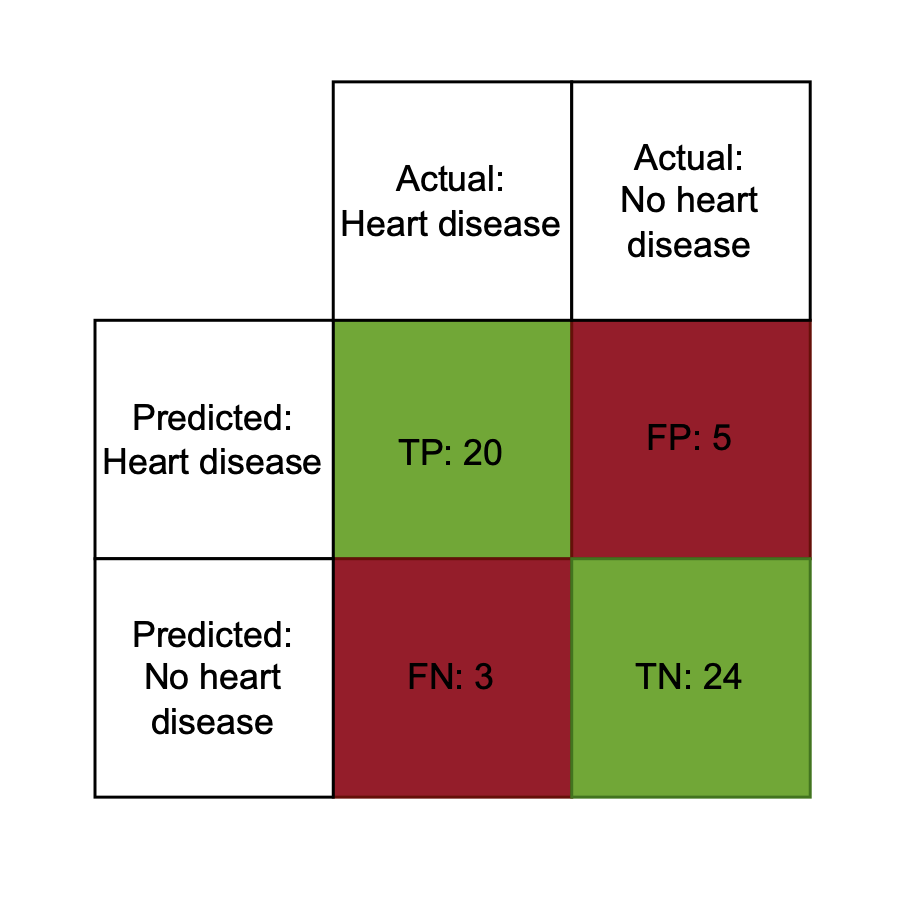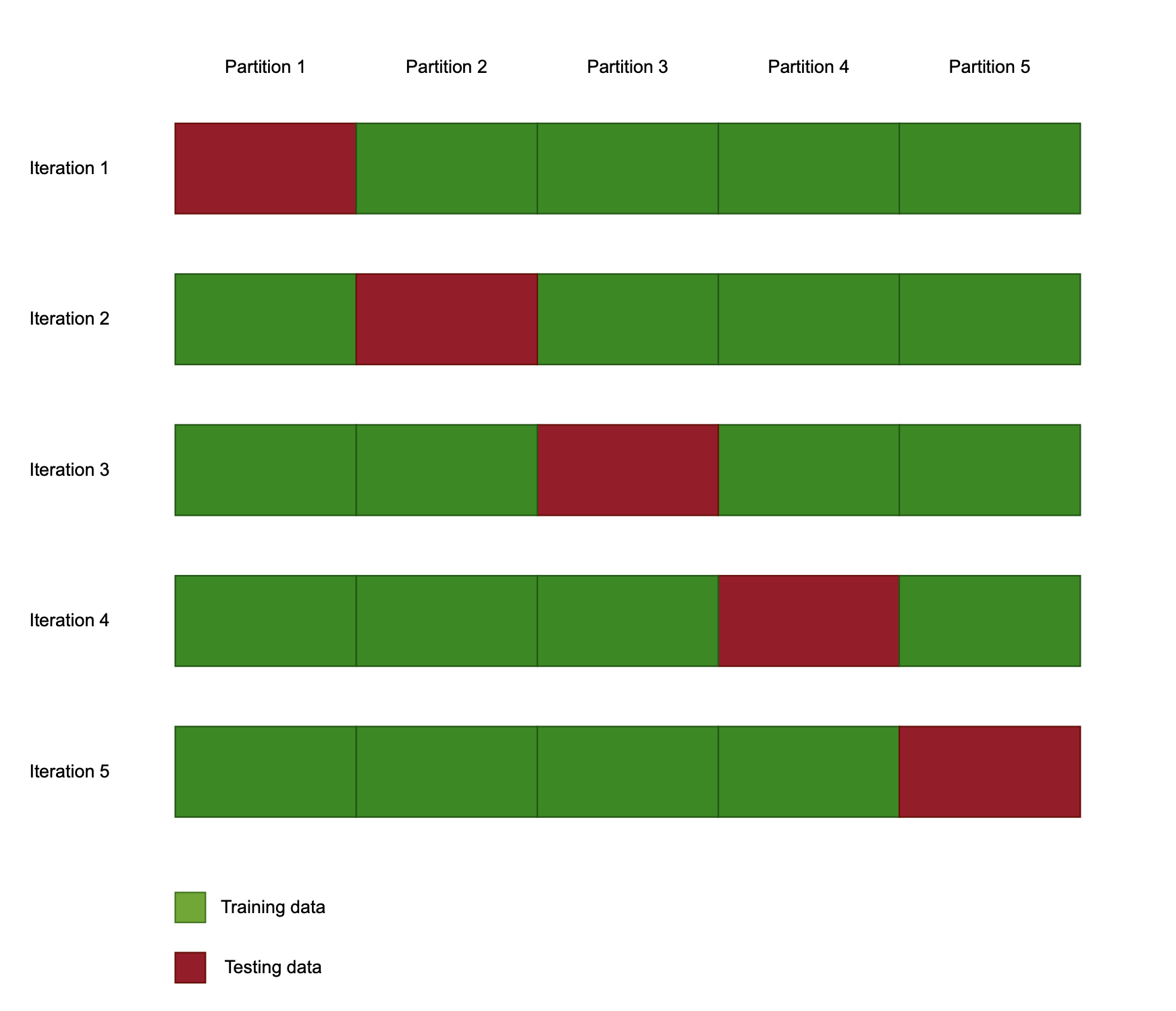Model evaluation and visualization
End-to-End Machine Learning

Joshua Stapleton
Machine Learning Engineer
Accuracy
- Correct accuracy metrics are vital to robust model evaluation
- Easy to misinterpret or obscure results
Standard accuracy:
- Standard accuracy = num correct answers / num answers
- Standard accuracy can be unhelpful
Example:
# achieves ~99% accuracy for imbalanced dataset of 99 positive and 1 negative
for patient_datapoint in heart_disease_dataset:
model.prediction(patient_datapoint) = 'positive'
Confusion matrix
True positives (TP)
- Model prediction = actual classification = positive
- The model predicted heart disease, the patient had heart disease
False positives (FP)
- Model prediction = positive, actual classification = negative
- The model predicted heart disease, the patient did not have heart disease
False negatives (FN)
- Model prediction = negative, actual classification = positive
- The model predicted no heart disease, the patient had heart disease
True negatives (TN)
- Model prediction = actual classification = negative
- The model predicted no heart disease, the patient did not have heart disease
Balanced accuracy
- Better metric than plain accuracy for most binary classification models
- Provides weighted average across both classes
- Balanced accuracy = (TP + TN) / 2
from sklearn.metrics import balanced_accuracy_score
# Assume y_test is the true labels and y_pred are the predicted labels
y_pred = model.predict(X_test)
bal_accuracy = balanced_accuracy_score(y_test, y_pred)
print(f"Balanced Accuracy: {bal_accuracy:.2f}")
Balanced Accuracy: 0.85
Confusion matrix usage

Cross validation
Cross-validation
- Resampling procedure
- Ensures robustness of results
k-fold cross-validation
- Param 'k' = number of splits for dataset
- Resample new train/test split for each modeling run

Cross validation usage
- Straightforward implementation of k-fold cross validation using sklearn
- Model-agnostic scoring
Usage:
from sklearn.model_selection import cross_val_score, KFold # split the data into 10 equal parts kfold = KFold(n_splits=5, shuffle=True, random_state=42)# get the cross validation accuracy for a given model cv_results = cross_val_score(model, heart_disease_X, heart_disease_y, cv=kfold, scoring='balanced_accuracy')
Hyperparameter tuning
Hyperparameter:
- Global model parameter (doesn't change during training)
- Adjust to improve model performance
# Hyperparameters to test
C_values = [0.001, 0.01, 0.1, 1, 10, 100, 1000]
# Manually iterate over the hyperparameters
for C in C_values:
model = LogisticRegression(max_iter=200, C=C)
model.fit(X_train, y_train)
accuracy = cross_val_score(model, X, y, cv=kfold, scoring='balanced_accuracy')
print(f"C = {C}: Bal Acc: {accuracy.mean():.4f} (+/- {accuracy.std():.4f})")
Hyperparameter tuning example
Example output for hyperparameter tuning:
C = 0.001: Bal Acc: 0.6200 (+/- 0.0215)
C = 0.01: Bal Acc: 0.7325 (+/- 0.0234)
C = 0.1: Bal Acc: 0.7923 (+/- 0.0202)
C = 1: Bal Acc: 0.8050 (+/- 0.0191)
C = 10: Bal Acc: 0.8034 (+/- 0.0185)
C = 100: Bal Acc: 0.8021 (+/- 0.0187)
C = 1000: Bal Acc: 0.8017 (+/- 0.0188)
Let's practice!
End-to-End Machine Learning

